Biophilia is “Our new design philosophy” at BLUCAP Interiors, but it’s much more important than that. It is associated with greater well-being. However, many of its proponents think mainly in terms of the emotional need to connect with nature, an effective and easily-understood approach. 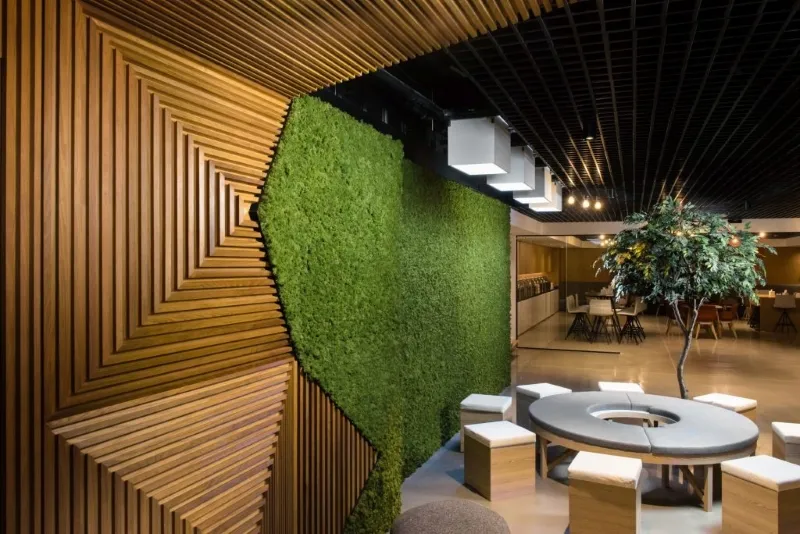
From a commercial perspective, biophilia is a solution for creating better working environments. Windowless offices, poorly lit common areas, and cluttered design can all have numerous negative effects on humans, ranging from sleeping issues to increased sick leave. By building and designing with biophilic principles in mind, these problems can be significantly mitigated.Since strengthening the connection between people and nature is the main objective of biophilic design, it doesn’t come as a surprise that outdoor views are key.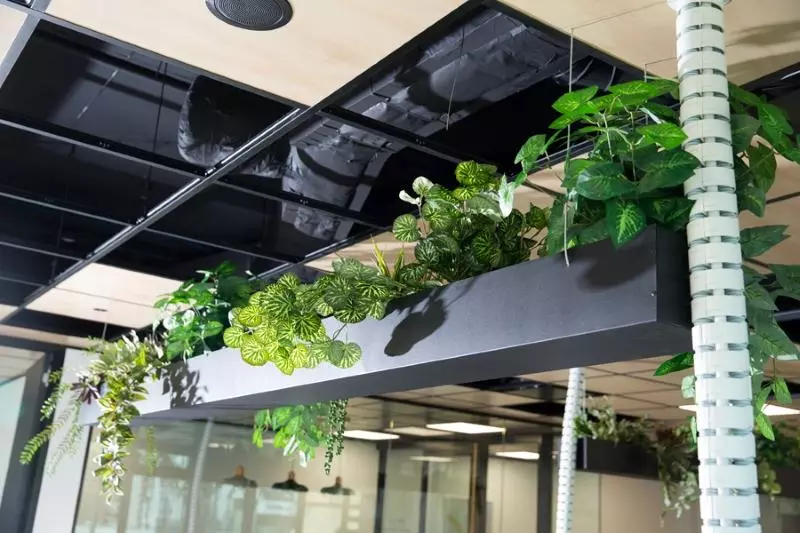
However, design experts believe we can create more effective spaces if we use a sensory approach to design. When we stimulate our senses the way nature intended, the benefits to productivity, creativity, and psychological well-being (among others) abound. Interiors that mix the 5 senses feel naturally more interesting and engaging. And a thoughtful sensory design can truly improve how we feel in a space!
Sight
Vision is our primary sense. It is a broad term – it covers our perception of brightness, contrast, color, shape, distance, orientation, time of day and movement – at least eight senses in one. We use our eyes to scan far and wide as much as we do to examine tiny objects in our hands or under microscopes. We are constantly scanning the environment and changing our focus. Our eyes help us to avoid fast-moving objects, or coordinate our hands to catch them.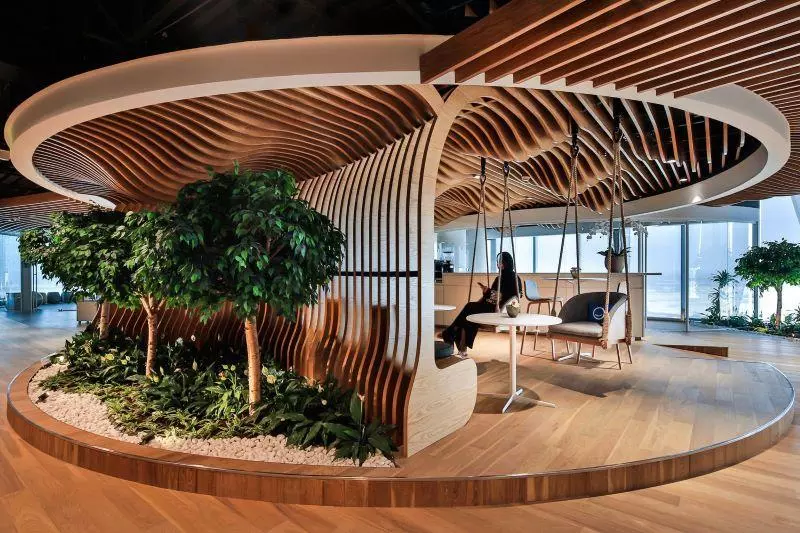
So, what do we do in offices?
Many offices have uniform lighting that varies little throughout the day. Office workers focus their gaze on a screen, placed at eye level and only a short distance from their nose. If you are lucky to be near a window, it might have its blinds down, or you will get a view of another office block across the street. This does not stimulate our sense of sight the way that we need for true comfort. Indoor plants can be used to recreate something of our natural habitat – especially if arranged in a naturalistic style. Art and wall coverings, such as murals, can create stimulus and awaken memories of happy places. Varied texture and color can have a similar effect, but lighting is one of the most effective ways to improve sight qualities.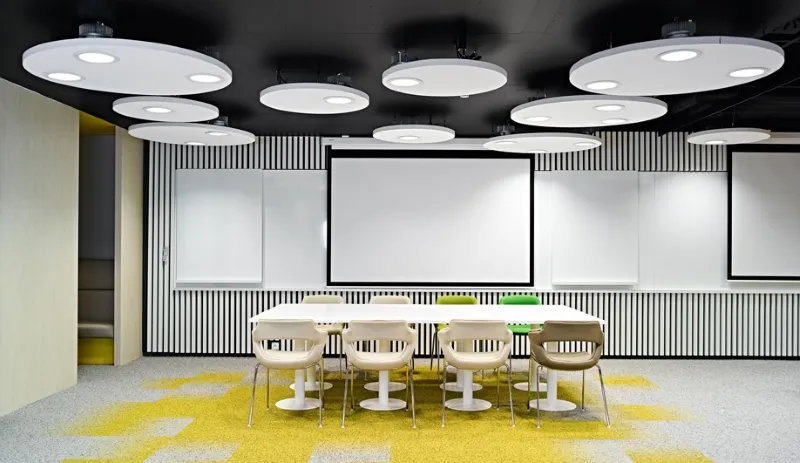
Biodynamic lighting – sometimes called human-centric lighting – is one way around the problem of poor light quality and lack of variation throughout the day. These systems, adjust the light quality during the day to better reflect the changes in light quality found outside, and it has been shown to have a dramatic effect on the production of stress hormones and improvements in sleep quality.
Sound
Offices can be noisy and distracting. Recent research has shown that noise is one of the biggest complaints in modern offices. The background hum of machines, overheard conversations, or the audible sound of music leaking from a colleague’s headset – all set to drive people beyond the edge of reason.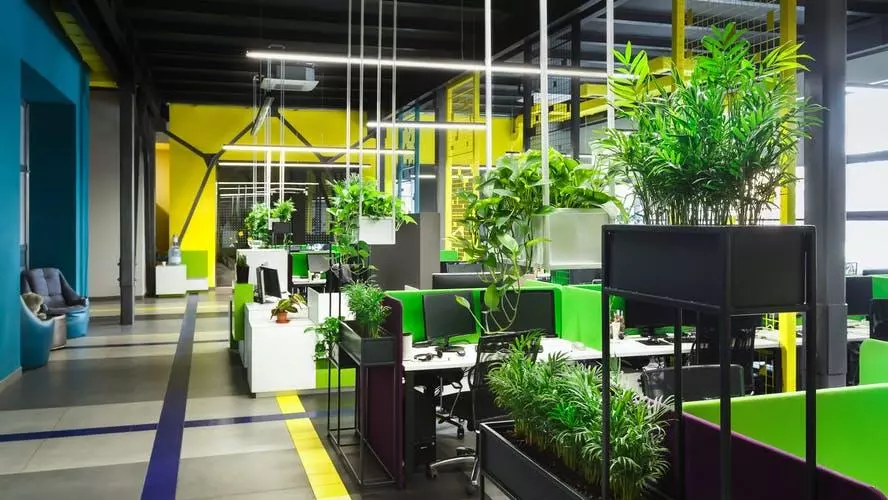
New technology has been developed to create sounds that mask those distractions – a good example being the Habitat Sound scaping system developed by Plantronics – which uses a simulated water sound to mask loud conversations and reduce the impact of a distraction. Clever technology can detect and mask distracting noise at an incredibly localized level. It can even move the acoustic mask as the source of the sound moves.Natural sounds, such as water or birdsong, can invoke a sense of calm.Vegetation can also be used to reduce echoes and absorb certain frequencies.
Smell
The insides of buildings can be smelly places. Malodors from restrooms or trash receptacles (or even poor personal hygiene) can be an unwelcome addition to the sensory environment. From an evolutionary point of view, malodors represent something you should avoid – unsanitary conditions or the presence of rotting waste. Smells derived from solvents and other building materials prime your body to try and avoid the area.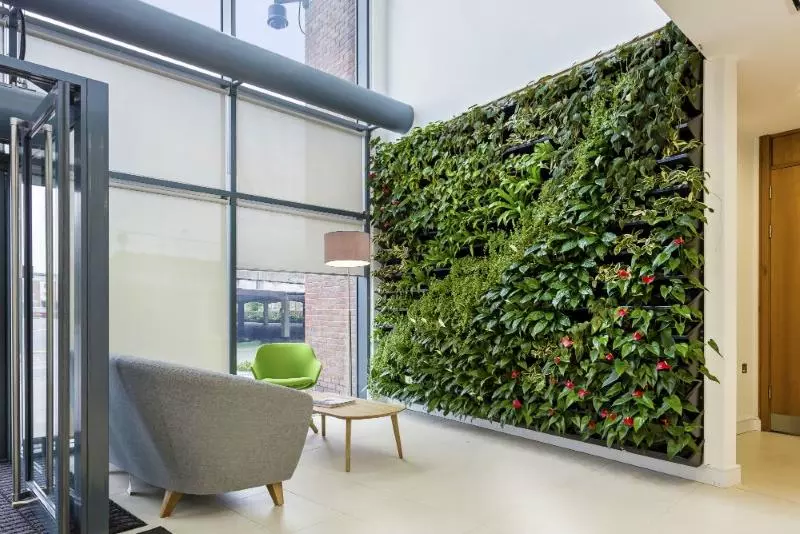
Malodors can be masked and pleasant smells introduced. Technological solutions, such as the Premium Scenting system can release naturalistic scents into the environment that are much more similar to those found in healthy human environments. The psychology of scenting is a relatively new discipline, but measuring the responses and reactions to different fragrances is helping designers to add an extra dimension to interior space.
Touch
Modern office buildings feature smooth laminated desks, uniform floor coverings, straight lines, and right angles, plain walls and shiny surfaces. Our sense of touch is deprived of stimulus, apart from our fingertips bashing away at a keyboard.Texture can help us navigate spaces. Our feet are very good at determining whether a pathway is even and supportive. Our fingertips do the same, especially when we can’t see what we are dealing with.Companies are exploring how texture can be used on walls and floors to revitalize our sense of touch when using a space. Other objects call out to be touched as well – the feathery foliage of a fern or the soft, smooth texture of some minerals. The use of a wide variety of textures as part of an interior design adds interest and stimulus.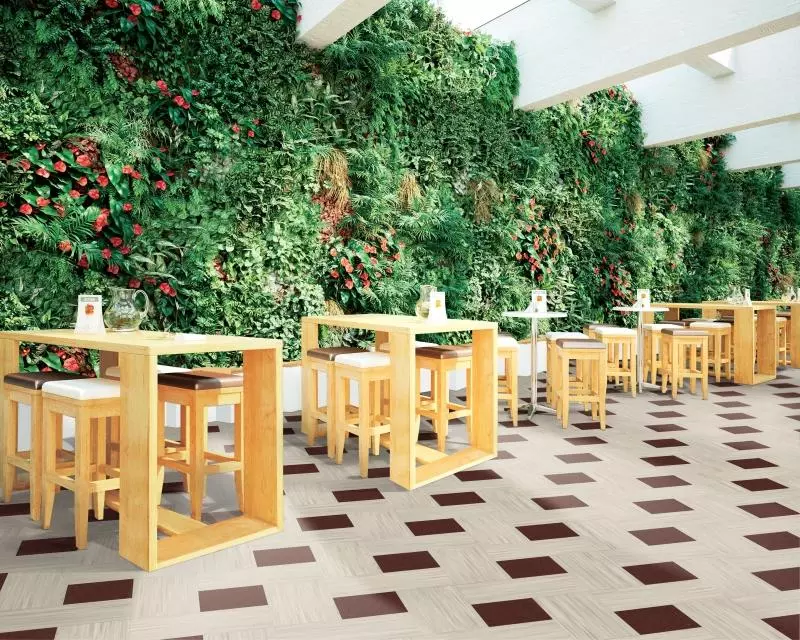
Taste
Admittedly, taste is a matter of, well, taste! It is also hard for a designer to deal with. You cannot mandate a particular menu or blend of coffee. However, a good facilities manager can certainly ensure that a wide variety of nutritional needs are met and tastebuds are stimulated.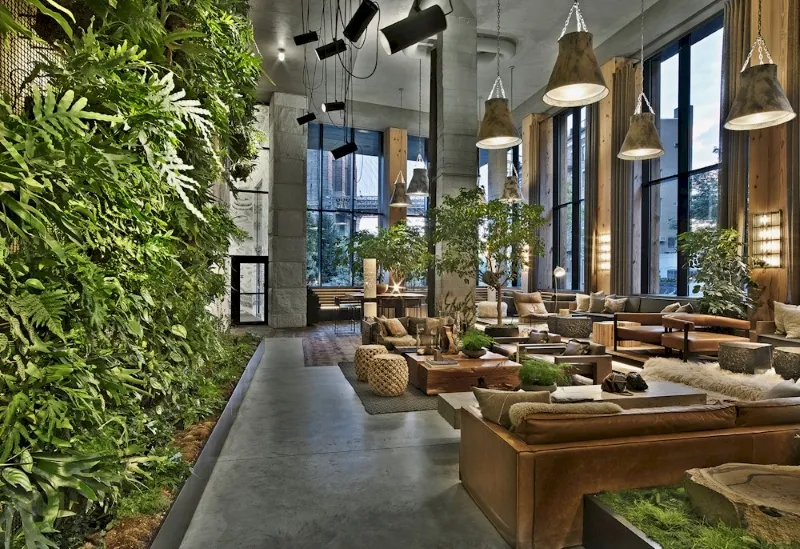
By expressing our need to connect with nature on an emotional level, we instinctively understand the concept. We remember that being in natural places makes us feel good and that the countryside and woodlands are instantly relaxing. Bringing nature into our built environment – our offices and cities – is a great response to that feeling of calm that we get while in the presence of nature. However, let’s examine why being in nature really makes us feel comfortable. Researches contend that it isn’t wholly a psychological or emotional need, but much more of a physiological need. This is where “Stimulating the senses” begins to make sense.
The benefits of non-rhythmic sensory stimuli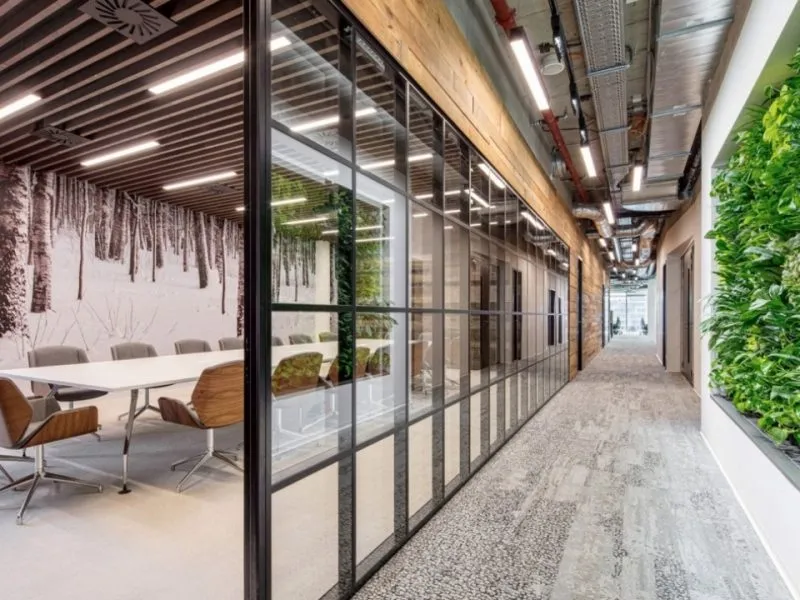
- Unexpected sensory stimulations like the ones that happen in nature act as a restorative break for the mind.
- They distract it for a moment, giving it a chance to get back to work more focused than before.
- From a physical point of view, these stimulations catch the eye. And looking at a point at a distance helps to relax eye muscles – a particularly useful exercise when staring at a screen for long hours.
- These positive distractions are therefore ideal for offices or spaces where people concentrate.
In nature, these unexpected stimulations are also a clear sign that the environment is alive. So, bringing them indoors will give life to the space, making it more compelling and ultimately healthier.


